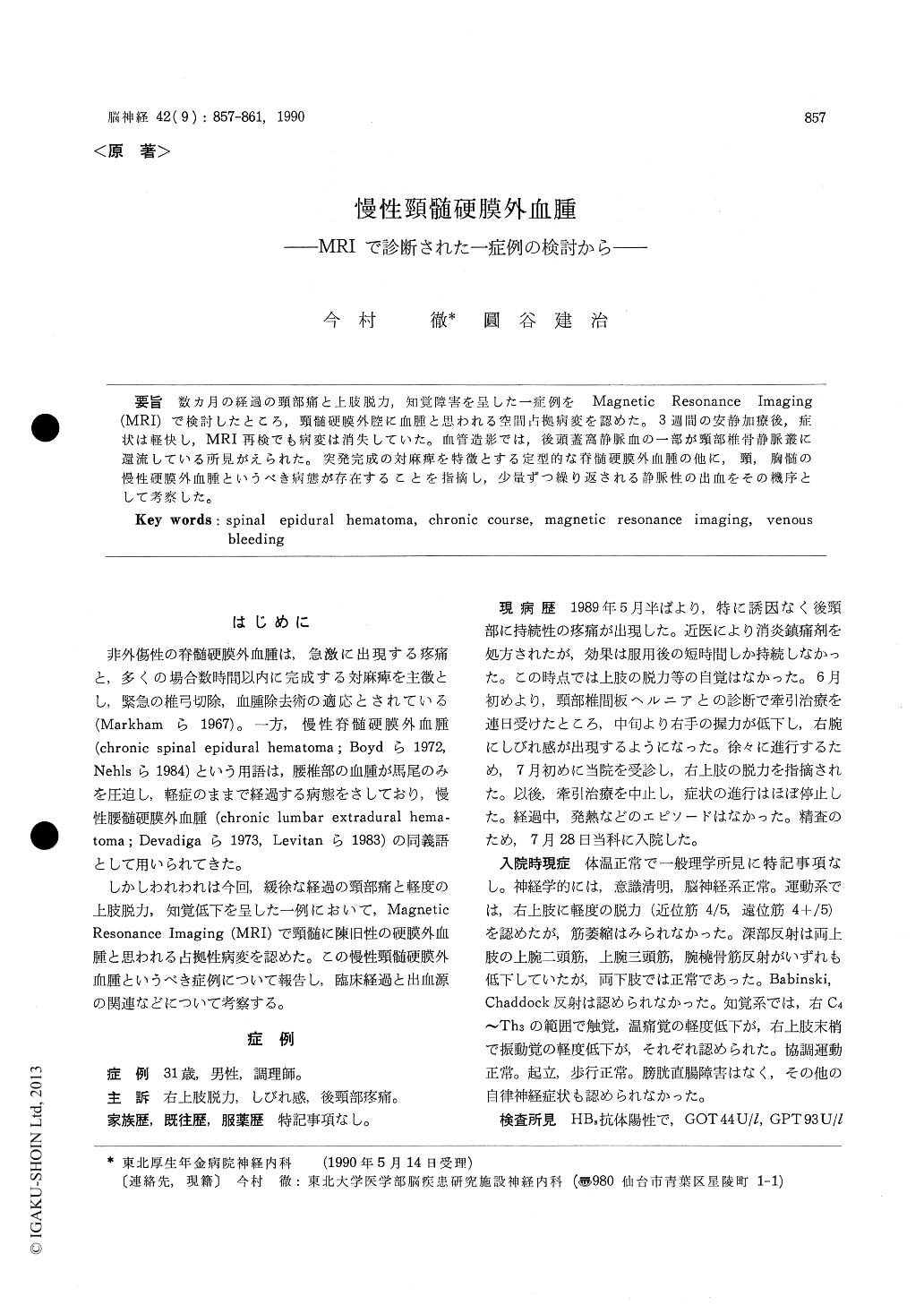Japanese
English
- 有料閲覧
- Abstract 文献概要
- 1ページ目 Look Inside
数カ月の経過の頸部痛と上肢脱力,知覚障害を呈した一症例をMagnetic Resonance Imaging(MRI)で検討したところ,頸髄硬膜外腔に血腫と思われる空間占拠病変を認めた。3週間の安静加療後,症状は軽快し,MRI再検でも病変は消失していた。血管造影では,後頭蓋窩静脈血の一部が頸部椎骨静脈叢に還流している所見がえられた。突発完成の対麻痺を特徴とする定型的な脊髄硬膜外血腫の他に,頸,胸髄の慢性硬膜外血腫というべき病態が存在することを指摘し,少景ずつ繰り返される静脈性の出血をその機序として考察した。
The clinical picture of spinal epidural hema-toma is usually characterized by the sudden onset of pain and acute paraplegia within a few hours. The reports of chronic spinal epidural hematoma above the lumbar level is extremely rare. Here we added one case whose hematoma was at cervical level. A 31-year-old previously healthy male suffered from continuous sharp pain in the back of his neck about 10 weeks before admission. He took analgesic drugs and treated with head traction by his home doctor with minimal relief. 4 weeks later from onset progres-sive weakness and numbness appeared at his right hand and arm. Physical examination on admission revealed mild monoparesis and sensory disturbance in his right upper limb. There was hyporefiexia of both upper extremities. Magneticresonance imaging (MRI ; Hitachi O.2 T) visua-lized a dorsal epidural space occupying lesion extending from C3 to Th1 vertebral body level. This revealed high signal intensity in T2 weighted image and mixed (low and iso) signal intensity in T1 weighted image corresponding to old hematoma. All his medication was stopped and he treated with collar brace, which improved his neurological status. 3 weeks later, he recovered fully and follow-up MRI revealed the total abso-rption of the hematoma. Left vertebral angiogram showed that a part of posterior cerebral venous blood drained to cervical vertebral plexus. This finding suggested his epidural bleeding was venous in origin.
Rupture of internal vertebral venous plexus that has no valves was considered as the source of spinal epidural hematoma. But a recent view regards it arterial in origin because its acute clinical course suggests rapidly expanding hema-toma and can be explained only by arterial ble-eding pressure. We agree this and discussed the recurrent venous bleedings, each of them may be brief for the compression of intrathecal pressure, as the possible mechanism of chronic spinal epidural hematoma.

Copyright © 1990, Igaku-Shoin Ltd. All rights reserved.


